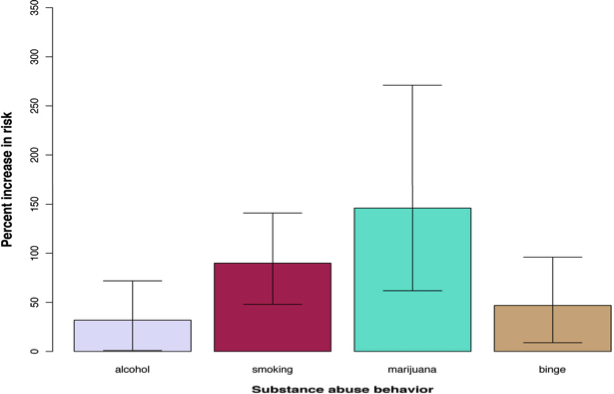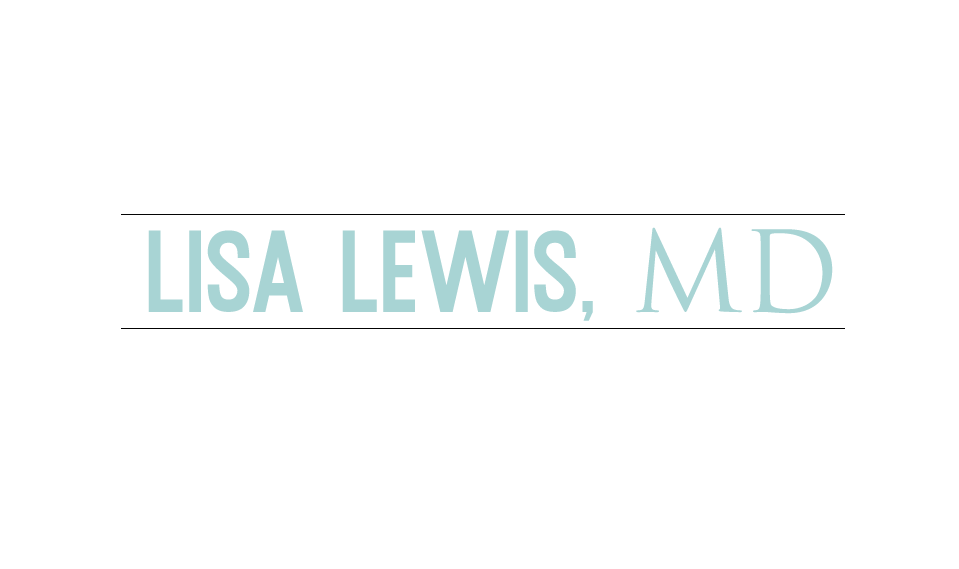Teen Essay – Teens Need Sufficient Adult Guidance
An essay written by Jordan Jaafar, Age 18, St. Mary's Hall, San Antonio, Texas, propels a parent's mind to reflect, and invites new behaviors. Jordan has penned a compelling argument for increased parental guidance and involvement in the teen years.
We know adolescents need our love and support. Yet, in their quest for independence we may feel pushed away.
Parents, stay connected with your teen.
We are coaches and confidantes. Parents help children understand that inappropriate behavior leads to appropriate consequences. Yes, even when we feel shut out, we can be let in and make a difference in our children's lives.

The Blurred Lines of Teenage Decisions
by Jordan Jaafar
We are all familiar with the stereotype of the senseless teen, a common and reoccurring figure in America’s complex society. Some use drugs; some drink and drive. Some get caught; some get away with it. Many more never take part in any of these activities. In the midst of these circumstances, communities and individuals continue to believe that these two distinct groups are natural facets of the teenage years, contending that some children will grow into successful members of society while others will lead lives of failed dreams. It is much easier to remain stagnant and mute than it is to change a mindset, even if that new mindset would benefit the growing youth of our nation.
Today’s youth continue their lives whether or not change is occurring. Being a part of this group as a senior in high school, I face many decisions on a regular basis and live in an environment erupting with dangerous opportunities. In the past few months, our school community faced the consequences of one wild party that resulted in an emergency room trip for a student. We continue to mourn the loss of a Saint Mary’s Hall alum killed in a pedestrian-versus-car accident where texting was involved. Even with these devastating mistakes that lead to immense pain and tragedy, every situation in which a teenager might find him or herself cannot be fully controlled, as teens are only a single bound from colleges, careers, and families of their own.
Despite the importance of independence in a teen’s journey to adulthood, leaving adolescents with insufficient guidance in their decision-making processes can sanction a multitude of wrong choices regarding drugs, alcohol, and risky behaviors.
To dodge these treacherous hurdles, teens need both experienced individuals to provide initial guidance and adequate tools to promote further success. As with any other human process, making critical choices begins in the brain. Teenagers are at a developmental turning point in their lives, as their minds are generally adept in logic and non-emotional cognition but lacking in a mature prefrontal cortex for effective risk and benefit analysis. Additionally, pleasure-inducing dopamine activity is at a lifetime high in the teen brain, amplifying the smallest of rewards and masking even the most obvious of risks (Steinburg). Given this research verified in countless experiments worldwide, it is no surprise that teens, however benign their intentions may be in principle, are especially susceptible to making bad decisions regarding their own health and safety and that of others. They may drive a little too fast, drink a little too much, or go a little too far without a second thought, supporting Steinburg’s research of the teen brain.
Given this apparent vulnerability in young people, poor parenting is arguably the most significant contributor to detrimental choices during a teen’s years of growth. Analysis of long term studies at UCLA solidify this position, in that families with fathers who played the role of “tough guy” when talking to their kids about smoking actually increased their child’s chance of becoming addicted to cigarettes. Furthermore, the same studies demonstrated that mothers who smoked had the same negative effect on their child’s choices, as contradictory signals were forced into the child’s mind (Jaffe). One signal asserts that smoking is dangerous, while the other legitimizes it as mom’s normal habit. Given the surging dopamine activity and the notorious rebel spirit that characterizes adolescence, careless choices inevitably ensue in many of the households described by researcher Adi Jaffe in these UCLA studies. A parent or guardian’s contributions to their adolescent’s maturation applies in all aspects beyond smoking including drug usage, alcohol consumption, and risky behaviors, reaffirming the role of family in a teen’s journey. If these contributions are administered inconsistently, The University of Michigan Extension asserts that the “teen [will] find it difficult to recognize the value of responsible behavior,” given that their parents are unable to always serve as positive role models (Tiret). This potential mistake on the parent’s part is completely preventable and well within their control. Bearing a significant role in a young life, parents also have the potential to improve their child’s surroundings by exerting some influence over who associates with their child.
Peer relationships, just like familial ones, are influential in a teen’s decision-making processes, and parents should realize they are able to provide guidance in seeking supportive, healthy friendships. In addition to his previous remarks on the teenage brain in the context of driving and other risky activities, Steinburg provides examples of when the presence of distracting passengers can drastically increase accident rates with teenagers, for “[w]hen friends are around, [the brain’s reward] system is more easily aroused, and teens pay more attention to the potential reward.” Similarly, peers who use substances have an equivalent effect on those with whom they associate. The effect is not confined to one area, such as alcohol abuse, but is spread among a multitude of instances and activities. While Steinburg and other researchers emphasize issues associated with driving and risky behavior, the figure below from the National Center for Biotechnology Information illustrates how peer groups increase the probability of influencing a teen to use marijuana or alcohol and increase instances of smoking or bingeing (“Figure 2”). As demonstrated in the following graph, friends and peers who use substances often encourage others to use them as well, a simple fact with no straightforward remedy.

Figure 2. Graph. National Center for Biotechnology Information. PubMed Central, 2012. Web. 10 Jan. 2016.
Many of the nonviolent teens represented in the graph above could have had more support in their adolescent years, but will instead face jail time as children in an adult system, potentially paying with an increased chance of sexual victimization or psychological attacks. Echoing the sentiments of millions of Americans, Journalist Jessica Lahey contends that “children lose more than their freedom when they enter adult prisons,” for these kids who received little to no support in their formative years now face a nearly 36-fold increase in suicide attempts when compared to their counterparts outside of the adult system. Additionally, the costs of these ineffective, dollar-siphoning institutions fall on every demographic, from the inner-city kid caught with a bag of weed to the rural farmer sending his annual taxes to the county. Thus, poor choices by a single population of misguided adolescents in our society plague the entire nation.
Yet another ineffective source of guidance for a teen’s decisions comes from his or her school environment, typically a publically-funded program. Sex education, a relatively new phenomenon in terms of secondary school learning, is geared towards preventing risky behavior in adolescents interested in relationships with the goal of informed decisions on the teen’s part. Although state governments control much of the education system, the federal government remains involved in this component of schooling and gives “over a billion dollars to exclusively support [a] single-purpose [abstinence] program while denying funding for other more flexible approaches” (“Sex Education”). Abstinence is an integral part of sex education, as it is the safest, most effective way of guiding our youth in avoiding negative consequences as a result of a rash action. However, many rebel-minded, curious teens will inevitably stray from this path, rendering abstinence-only programs ineffective as complete remedies to the problem. As a society, we must realize where our resources are being funneled, questioning the effectiveness of each approach in providing teens with the information they need. In this case, vast sums of taxpayer dollars spent on programs where teenagers “were no more likely than [other] youth not in the programs to have abstained from sex” should create a healthy sense of skepticism and raise questions about the current inadequacy of a program that is not effectively teaching (qtd. in “Sex Education”). While there are beneficial ways to combat poor sexual choices through proper guidance, the current program’s country-wide failure clearly demonstrates the need for novel approaches.
With many well-tested remedies lying unused, our society has the opportunity to move away from the typical substance abuse and abstinence programs that are being broadcasted to millions of American youth every day and move toward other in depth messages, such as media literacy programs championed by collegiate-level educators. These media literacy programs are efforts to provide young people with a chance to think for themselves by utilizing critical thinking skills to correctly interpret the vast amounts of information being forced into their developing minds by often ill guided entertainment corporations. Media literacy has produced students who have gained “a less-idealized and more fact-based understanding of how media operate,” consequently losing much of their normalized view of sexual content in entertainment (Chen et al.). Although Dr. Chen focuses on the sex education component, the techniques utilized in the programs she describes could easily be applied to a variety of new situations, from substance abuse courses to sobriety behind the wheel initiatives. Analytical skills that these programs teach are versatile in that they do not simply attack one idea or concept; rather, they allow a young person to bolster his or her own mental capacity on a personal, independent level and thus give youths the means to decipher often complex and confusing entertainment. American adults have shown “overwhelming support (83%) for [this] comprehensive approach” to sex education, and media literacy is an integral piece of this larger plan (“Sex Education”). Media is a crucial influence on adolescents’ views of serious situations, and it needs to be treated just as carefully and thoroughly as any other relationship, such as those with peers.
Another grassroots effort to end poor teen decision-making starts with peer groups of teens themselves. Forward-thinking youth and communities across the nation have formed coalitions to combat the many stereotypes that some teenagers continue to perpetuate. Nationwide, some of the most notable and successful programs to combat deficient judgement are student lead initiatives, from Shattered Dreams of Texas and its dramatization of fatal, alcohol-related auto accidents to Connecticut-based Students Against Destructive Decisions and their numerous local chapter that educate students about substance abuse (Poland and Pusateri 63). When kids are the ones volunteering to assist their peers—steering them away from drugs, preventing a fatal car accident, or ending a damaging relationship—everyone benefits tremendously. Mass audiences of young people can learn efficiently from members of their own social groups, potentially increasing their receptivity to the new message and subsequent positive actions. From a practical standpoint, teen-led programs seem much more affordable and efficacious in recognizing the need for assistance when compared to their state-run counterparts.
A final approach to addressing teen behavior can begin with the teen understanding that his or her positive lifestyle can also be cultivated on a more personal level, well beyond the constraints of formalized programs and initiatives. Psychiatrist Dr. Viji Patrick, a substance abuse specialist, explains the dynamic, transformational crossroads point in a young person’s life where choice in the present can influence the future, acting as a guide to enhanced judgement:
Adolescence is a period where there is a natural process of separating from parents, [an] eagerness to gain acceptance and popularity with peers, and a sense of autonomy and independence. They may either seek fun and adventure or rebel against authority. Experimentation is a normal part of adolescent development, not only with drugs and alcohol but with a wide range of other behaviors.… [Teens should] [b]e open to talk about stress, feelings, and abuse.”
Dr. Patrick’s opinion focuses on two foundational components, each with two additional parts: a cause, either a positive or a negative, and a reaction, either a triumph or a mistake. The independence she references serves to characterize the catalysts of each teen’s decision, one that can be healthy freedom or jeopardous disobedience. Her closing recommendation to teens can be contrasted by the all too common potential choice to be isolated, closed, or defensive. One cannot be receptive to help if he or she has the mindset of avoiding it, falling short of realizing a better course of action. Dr. Chen’s media literacy programs and the student-led programs mentioned before provide a solution, but fall short with teens not willing to participate. Teen decision-making must begin within the teen’s own mind first. Once a teenager becomes broadminded, many of the innovative solutions proposed by the thousands of experts across the country can be put to immediate and effectual use.
While there will always be a sizable group of adults with the opinion that the younger generation is idle, irresponsible, or even negligent, failing to provide instruction and means for teenagers to thrive would be a senseless (and quite frankly unintelligent) choice. Sizable progress has been made, but our current methods are far from perfect, as they are often driven by solutions that are sound in their ideals but tenuous in their implementation. Teens continue to make mistakes. A multifaceted approach hinged on parental education, community involvement, and teen action would supplement programs that heed the advice of researchers and psychiatrists instead of inaccurate speculation on possible solutions to a growing issue. Investing in a strong foundation for teenagers today will undoubtedly pay dividends with a healthy, vigorous population of young adults in the coming future.
Works Cited
Chen, Yi-Chun Yvonnes, et al. “Media Literacy Programs Help Teens Resist Negative Media Images of Teen Relationships.” Teen Dating (2013): n. pag. Opposing Viewpoints in Context. Web. 14 Jan. 2016.
“Figure 2.” Graph. National Center for Biotechnology Information. PubMed Central, 2012. Web. 10 Jan. 2016.
Jaffe, Adi. “Parents Can Influence Teens Not to Smoke.” Teen Smoking (2014): n. pag. Opposing Viewpoints in Context. Web. 9 Jan. 2016.
Lahey, Jessica. “The Steep Costs of Keeping Juveniles in Adult Prisons.” The Atlantic. The Atlantic, 8 Jan. 2016. Web. 13 Jan. 2016.
Patrick, Viji. Message to the author. 22 Jan. 2016. E-mail.
Poland, Scott, and Michael Pusateri. “Preventing Teen Motor Vehicle Accidents.” District Administration Apr. 2012: 62-63. Masterfile Premier. Web. 12 Jan. 2016.
“Sex Education.” Opposing Viewpoints Online Collection (2014): n. pag. Opposing Viewpoints in Context. Web. 11 Jan. 2016.
Steinburg, Laurence. “Brain Development Limits the Decision-Making Skills of Teen Drivers.” Teen Driving (2013): n. pag. Opposing Viewpoints in Context. Web. 9 Jan. 2016.
Tiret, Holly. “Helping Teens Learn Independence and Responsibility.” Michigan State University Extension. Michigan State University, May 2015. Web. 13 Jan. 2016.
